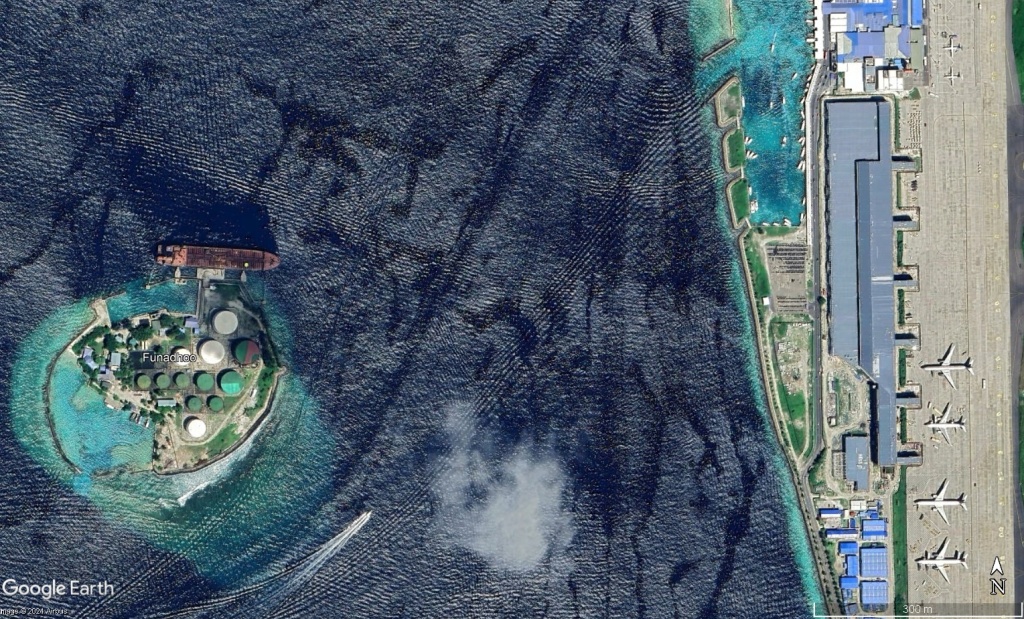Plans for expansion of Velana Airport, the main airport in the Maldives, and a linked Economic Zone on Funadhoo Island are certainly ambitious. A video outlines a blueprint for a 20-year, multi-billion dollar development.
The expanded airport will be designed to accommodate 25 million passengers per year (nearly a six-fold increase over 4.3 million passengers in 2022). A new cargo terminal is forecast to handle 100,000 tonnes by 2025, rising to 300,000 tonnes by 2050. Aviation fuel farm storage will be expanded fro 15 million litres to 100 million litres. The passenger processing capacity of the domstic terminal will be increased from 300 per hour to 2,000. A self contained jet terminal is described as ‘serving niche market segments of the airline industry, exploiting this market segment and investing in it is an essential part of the future airport infrastructure’. The airport footrpint will extend to other islands. Seaplane facilites operations will be relocated to another island and linked to passenger terminals via a new bridge. The ‘epitome of this futuristic vision’ is development of an Airport Economic Zone on the island of Funadhoo, linked to the rest of Velana Airport and ‘offering a plethora of shopping opportunities’ along with hotels, convention centres and entertainment facilities.

Ambitious plans for the small island of Funadhoo, currently taken up by oil tanks and located to the east of Velana Aiport and close to Malé, the capital city, were announced in September 2023. President Ibrahim Mohamed Solih said that the oil tanks would be removed and replaced with a convention centre, hotel and shopping malls. On 4th January 2024, current President of the Maldives, Dr. Mohamed Muizzu, inaugurated the Velana International Airport and economic zone megaproject and pledged to develop Funadhoo Island as an international financial hub. He also revealed plans to create the ‘Maldives International Financial Services Authority’ as a step towards establishing an international financial centre in the Maldives. On 22nd January President Muizzu announced that, following relocation of the fuel storage to Maagiri Falhu, Funadhoo would be designated as a special economic zone.

